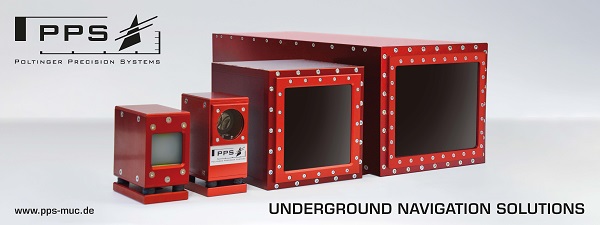The longest tunnel in Poland is opened
The tunnel under Ursynów is opened on Monday, December 20.
The tunnel under Ursynów is 2335 meters long. 3 Lanes in each direction per tube. Currently, it is the longest facility of this type in Poland, which, in accordance with applicable regulations, is packed with modern technology. Its task is to ensure the safety of tunnel users. The signals from cameras and sensors go to the Tunnel Management Center, which works 24 hours a day, 7 days a week, where they are processed by the traffic management system.
The systems watch, process and react on an ongoing basis Depending on the situation and the information collected by cameras and other sensors, tunnel users may encounter a change in the speed limit, the lane or even the entire roadway (as a result of a collision, accident or road works).
Weather and tunnel congestion warnings may appear on variable message signs before entering a tunnel, and if the entire tunnel is blocked, drivers will see detour information. The latter information will appear not only in the immediate vicinity of the tunnel, but also several dozen kilometers earlier, on the A2, S8, S7, S17, DK79 and DK92, before the intersections with the DK50. If necessary, drivers in the tunnel will hear the Tunnel Management Center messages broadcast through the sound system in the facility, as well as via the radio in the car - on one of the four public radio programs (92.4 and 102.4 MHz - Single; 99.1 MHz - Three or 104.9 MHz - Two).
If necessary, drivers in the tunnel will hear the Tunnel Management Center messages broadcast through the sound system in the facility, as well as via the radio in the car - on one of the four public radio programs (92.4 and 102.4 MHz - Single; 99.1 MHz - Three or 104.9 MHz - Two).
Intelligent, automated and safe tunnel ventilation
Both aisles of the tunnel are 2,335 m long and contain roadways with three lanes and an emergency lane (reserve for the fourth lane). The tunnel ventilation during normal traffic will be provided by the air rush caused by moving vehicles.
This natural ventilation may be assisted by mechanical ventilation, and its activation will be determined by the readings of the pollution measurement system (CO and NOx), airflow velocity and visibility. The activation of mechanical ventilation can also be caused by, for example, water vapor generated due to differences in air temperatures inside and outside the tunnel.
Additional ventilation will be provided by jet fans installed under the ceiling of the tunnel, at the inlet and outlet, as well as in the ventilation duct separating both aisles of the tunnel. The air to this channel will be sucked in from the fresh air intake located in the lower part of the fan house (buildings at both ends of the tunnel). Pumped by fans, it will go to the tunnel through air intake flaps located just above the road. If necessary, the used air will be drawn from the tunnel through exhaust flaps in the ceiling openings to the upper part of the ventilation duct and with the help of six fans (three in the fan house building), discharged to the high ejectors at both ends of the tunnel.
The ventilation system will also be responsible for safety during a fire. It is permanently connected to the weather station and the fire scenario is adjusted based on the wind speed readings. The supply and exhaust fans operate at 100%, depending on the wind speed and direction, jet fans are attached in various configurations. The amount of air supplied to a specific place in the tunnel will be regulated by means of flaps in the intake openings. In turn, the flaps in the exhaust openings will facilitate the smoke extraction of the tunnel. Emergency niches and evacuation passages
In the outer walls of both aisles of the tunnel, every 125 meters, 19 alarm niches are located. On the other hand, in the internal walls there are nine niches, each every 250 meters, and in them there are evacuation passages to the adjacent aisle. At each of the niches, on the tunnel wall, there are signs informing about their "equipment". Each has an emergency telephone, a fire extinguisher and a fire blanket, and in the evacuation passages - on both sides - there are also hydrants. There are also additional alarm bays in front of the tunnel inlet and after the exit from the tunnel, and hydrants are also located in them.
When using an emergency communication system, we do not need to identify where we are. Using the emergency telephone will be visible on the computer screens in the Tunnel Management Center, as will activating the manual call point (a small red box on the wall at the entrance to the niche) or taking the fire extinguisher out of the cupboard. This location system will facilitate the further actions of emergency services and will be more effective than alarming via mobile phones. In the eye of the cameras ...
The situation on each of the 2,335 meters of the tunnel will be monitored by 134 cameras non-stop. 22 are speed dome cameras mounted on the inlets and outlets of the tunnel and opposite the emergency passages. The others are fixed cameras, 104 of which are mounted along the inner walls of the tunnel and 8 at the inlets and outlets. The latter will acquire an image for the automatic license plate recognition system, integrated with induction loops inside the tunnel, used to determine the levels of freedom of movement or collected and statistical data on journey times.
Access to monitoring, in addition to our Tunnel Management Center, will also be available to the Warsaw Police Headquarters and the Security Center of the Capital City of Warsaw. Warsaw. In line with our appeals, the tunnel will also feature a sectional speed measurement, for which the Chief Inspectorate of Road Transport is responsible.
The television surveillance system has the function of automatic detection of specific events, e.g. the appearance of a pedestrian, stopping a vehicle or driving against the flow. Algorithms will be able to identify, monitor and report situations and objects that may constitute a potential risk of an accident or fire. In the event of a breach of safety rules, e.g. slow or stopped traffic of vehicles, driving against the current or loss of load by any of the road users or detection of the presence of smoke, alarms will be generated automatically in the tunnel. The employees of the Tunnel Management Center will be able to use the camera and video detection system to recognize the threat, on the basis of which a decision will be made to confirm the fire alarm, e.g. in a situation where there is a lot of smoke and a small amount of heat.
Let us add that 19 fire sensors were installed in each aisle, and three lines of linear temperature sensors were placed under the ceiling of the tunnel - along its entire length. Temperature detectors are also installed in transformer stations, ventilation rooms and technical rooms. …
And lamp lights
Regardless of the time of day, road lighting will function in the tunnel. Its task is to ensure the safety of users and the same driving comfort both during the day and at night. The intensity of the lighting in the tunnel varies depending on its location. We have five lighting zones: entry, threshold, transition, internal and exit.
The entry zone covers part of the open road directly in front of the tunnel portal, while the other four zones are inside the tunnel. The threshold zone is the first area of the tunnel after entry with the highest degree of luminance. Minimum luminance values are maintained in the inner and outer zones, which are constant during the day and night. The transition zone is characterized by a variable luminance curve combining the luminance values of the threshold zone and the inner zone. The luminance of the entry zone changes with the change of lighting in daylight conditions, and the luminance levels in the threshold and transition zones are fixed fractions of the entry zone luminance. Everything is controlled by the system of continuous, automatic lighting control with the possibility of manual interference in its work.
Let us add that about 100 km of cables have been laid in the tunnel, which are responsible for the efficient functioning of not only lighting, but also all systems responsible for the functioning of the facility.
The weather is under control
Meteorological and road sensors are installed in the tunnel and at the access roads to it, which will provide data on weather conditions and the condition of the surface. Among other things, air humidity, temperature of the air, pavement and substructure, type and intensity of precipitation and salinity of the pavement will be measured. The data will go to the Tunnel Management Center and the automatic icing early warning system, which will spray de-icing agents on the road when necessary, using spray plates in the road surface and sprinklers at curbs. The system, fed with de-icing agents from special tanks on both sides of the tunnel, will also be able to be started manually.
What if traffic is blocked in the tunnel
If a road incident occurs and as a result one of the aisles of the tunnel is blocked, the entrance to this aisle will be closed. First, a red light will appear on the traffic lights in front of the tunnel, then the barrier will close, and a message saying that the aisle is closed will appear on the variable message signs. Drivers who stand in a traffic jam in front of a closed barrier may not reverse or turn around. The release of these vehicles will be carried out under the control of the services conducting the rescue operation, provided that the traffic is directed by the Police.
Behind the barrier, and in front of the tunnel entrance, there is an emergency passage, on which quick-disassembly barriers are installed, the disassembly of which will facilitate the passage to the other lane of the road. The place in front of the tunnel entrance can also be used as a helipad.
There is also a special gate at the lowest point of the tunnel that allows emergency services to drive emergency vehicles to the second aisle. It will only be possible after traffic has stopped in the adjacent tunnel aisle and when traffic is directed by the Police in consultation with the Tunnel Management Center dispatcher.
In justified cases, after blocking one of the aisles and receiving an order from the head of the rescue operation, a temporary change in the organization of traffic and redirection of vehicles to the other aisle can be introduced.
Then rush in it will run in both directions. In the event of the closure of both aisles, the cars will be directed to the routes designated by the head of the rescue operation, in accordance with the approved rescue plan.
https://www.gov.pl/web/gddkia-warszawa/tunel-w-oku-kamer-i-pod-nadzorem-czujnikow
cover tunnel photo by: Matt Brown from London, England / CC BY
Copyright 2019-2024 TunnelContact.com







https://www.gov.pl/web/gddkia-warszawa/tunel-w-oku-kamer-i-pod-nadzorem-czujnikow
Tunel w oku kamer i pod nadzorem czujników - Generalna Dyrekcja Dróg Krajowych i Autostrad- Oddział Warszawa - Portal Gov.pl
www.gov.pl2335 metrów liczy tunel pod Ursynowem! Obecnie to najdłuższy tego rodzaju obiekt w Polsce, który zgodnie z obowiązującymi przepisami jest naszpikowany nowoczesną technologią. Jej zadaniem jest czuwanie nad bezpieczeństwem użytkowników tunelu....